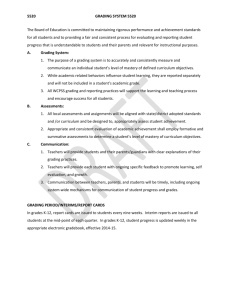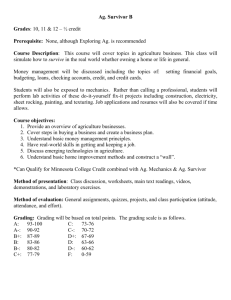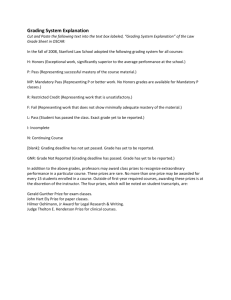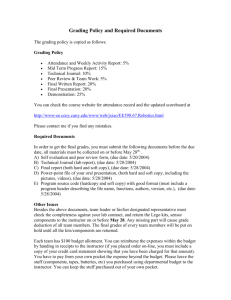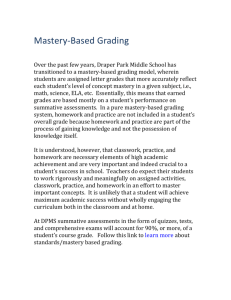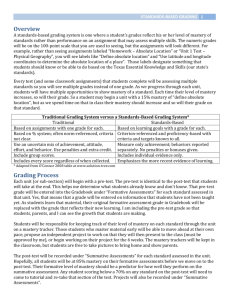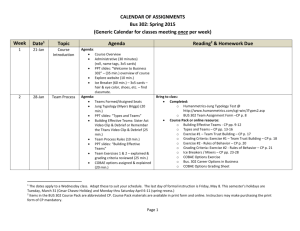Understanding Assessment in the Age of Accountability
advertisement
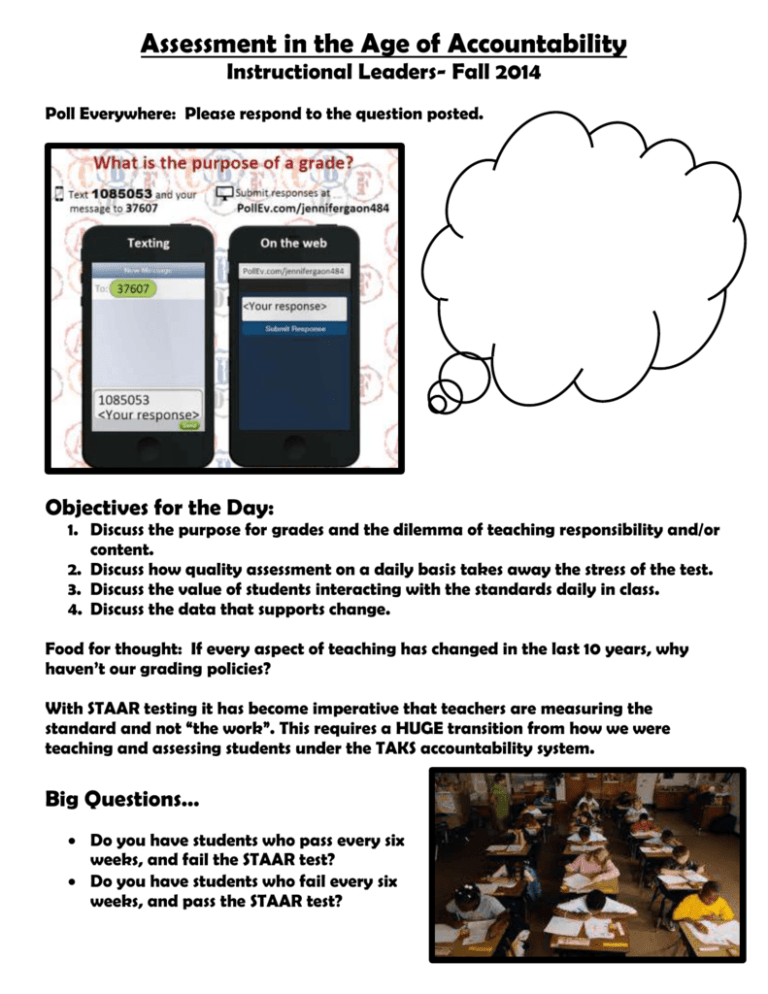
Assessment in the Age of Accountability Instructional Leaders- Fall 2014 Poll Everywhere: Please respond to the question posted. Objectives for the Day: 1. Discuss the purpose for grades and the dilemma of teaching responsibility and/or content. 2. Discuss how quality assessment on a daily basis takes away the stress of the test. 3. Discuss the value of students interacting with the standards daily in class. 4. Discuss the data that supports change. Food for thought: If every aspect of teaching has changed in the last 10 years, why haven’t our grading policies? With STAAR testing it has become imperative that teachers are measuring the standard and not “the work”. This requires a HUGE transition from how we were teaching and assessing students under the TAKS accountability system. Big Questions… Do you have students who pass every six weeks, and fail the STAAR test? Do you have students who fail every six weeks, and pass the STAAR test? The biggest question your teachers will have- what is my job? Do you want teachers to focus on teaching responsibility or do you want them to focus on teaching the standards? This idea sounded great, BUT what did that look like in a classroom? 2 keys for implementing a grading policy that held students accountable to content: 1. Grading policies need to reflect your goals. 2. Students need to interact with the standard. Classroom Expectations Handout- QR Code My goal is for all of my students to master the state objectives for my course. My grading policies had to MATCH this goal! What does that look like in the gradebook? Think about the names of your categories in the gradebook. Assignments do not all have to be worth 100 points, Readiness vs. Supporting Standards How do you allow for corrections/re-takes/re-dos? If your goal includes mastery then you need to allow opportunities for students to achieve mastery. Assessment Corrections Handout- QR code Brainstorm different ways you could have students show mastery of the standards on your campus? You can start changes at the administrative level and at the same time give teachers ownership of the details. Example: District/Campus policy- We will give opportunities for students to obtain mastery of standards through corrections and retakes of assignments. Teacher is allowed to set the timeline on when those corrections and retakes need to be completed and turned in. You need to give teachers ownership of their reality! 2 keys for implementing a grading policy that held students accountable to content: 1. Grading policies need to reflect your goals. 2. Students need to interact with the standard. GANAG- Objectives and Summary Statements QR code Make predictions on growing pains for your school or district: What do you think about the data? Conclusions Questions Possible positive results of changing your grading policies at your district… 1. 2. 3. Question of the Day: What is the purpose of a grade? Follow Up Question: Does the grading system you currently have at your district reflect this purpose? Bibliography Tim Westerberg, Becoming a Great High School, 2009 Robert Marzano, Standards Based Grading and Formative Assessment, 2009 Rick Wormeli, Fair Is Not Always Equal, 2006 Marilee Springer, Learning and Memory, 1999 Marzano, Pickering and Pollock, Classroom Instruction that Works, 2001 Please feel free to contact me if you have any questions. Jenny Gaona Social Studies/Instructional Technology Specialist jgaona@esc17.net (806)281-5805 Best wishes for the 2014-2015 school year!
